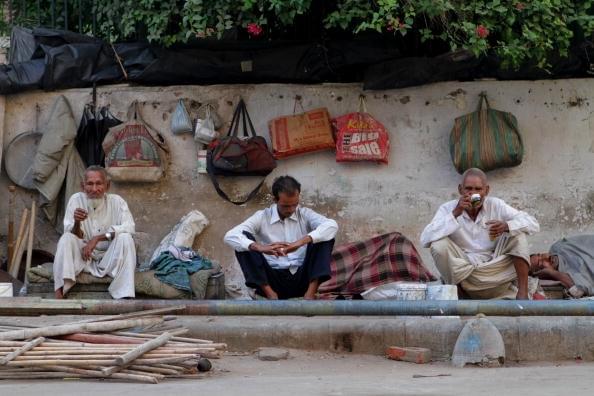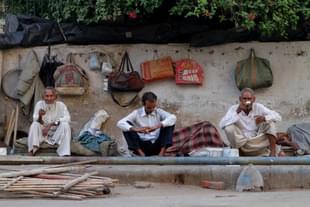Infrastructure
Reclaiming The Pavement For The Pedestrian: Ten Ways To Implement This
Srikanth Ramakrishnan
Mar 07, 2017, 03:37 PM | Updated 03:36 PM IST
Save & read from anywhere!
Bookmark stories for easy access on any device or the Swarajya app.


India’s urban centres vary vastly in their appearance and basic functionality. Each city has a certain amount of uniqueness attached to it, depending on local laws, the political party in power, or the city’s topography.
However, there is one common factor over which every city is notorious for: Pedestrian infrastructure.
Almost all cities in India have bad pedestrian infrastructure. Lack of footpaths or pavements, inaccessibility and encroachments are among the biggest problems. The problems vary from city to city. If Delhi has a problem of footpaths being inaccessible to the public because they are separated by a large hedge, Mumbai’s pavements are too narrow. Bengaluru on the other hand has uneven pavements which are not paved and are home to numerous transformers and electric poles. All of these make pavements a huge mess and a hazard for pedestrians.
In the recent past, several cities have woken up and built infrastructure dedicated to pedestrians. Mumbai began with its ambitious skywalk project in areas where there was high pedestrian footfalls, mostly in and around railway stations. Consisting of elevated walkways, the project can be termed successful, since people started using the skywalks to reach stations. It also did reduce chances of pedestrian fatalities. However, the one thing it failed to address was pedestrian fatigue. With a height of over six metres, the skywalks reached an average height of a two-storey building. At the end of a day, people are tired and climbing two storeys to reach a skywalk isn’t really something everyone would want to do.
Similarly Bengaluru, initiated its TenderSure project. Under TenderSure, certain standards were laid out for road widths, bus bays, bus stops, street lighting and installation of ducts for utilities to prevent digging up of roads among others. The most crucial of these standards are standardised widths for pedestrian footpaths. Footpaths were widened and had ramps near gates and intersections, with bollards (a short post, normally at waist height) to prevent vehicles from entering them.
However, both projects had a shortcoming, they aren’t widespread. They are limited to certain key areas of the cities. One could say that it is a good start, but projects need to be executed pan-city and not just in specific areas.
Now the question arises: Why are pedestrians discriminated against? Are they not bonafide citizens who have every right to expect something in return for taxes paid? Are they any ‘lesser’ than motorists? When a municipal body builds a road, or expands it, why doesn’t it focus on pavements at the same time? Why are pavements done separately, resulting in incomplete or shoddy work?
While the answer to these questions may vary, from ‘administrative reasons’ to ‘tender issues’, what civic bodies can ensure is that they set up a minimum checklist and guidelines when it comes to building pedestrian infrastructure.
A Basic Checklist For Pedestrian Infrastructure
In order to ensure proper footpaths and other walking zones, each city must standardise some elements of pedestrian infrastructure. These standards must be compliant with those set by the Indian Roads Congress which is the apex body of engineers in India for roads. These standards must also be set by the municipal or local body and not a state or the Union, as each city has different requirements. Some of the specifications that can be included are:
Width: Pavements need to have a standard width throughout a city. It can, however, be flexible depending on the locality it is built in. Minimum widths must be set, and wider pavements should be in multiples of the minimum width. The bare minimum width should be enough to allow two people to walk adjacent to each other.
Height: A pavement needs to have a standard height. In some cities, pavement height from the road is undulating for various reasons. This needs to be avoided so that people can climb the pavement easily, and at the same time, prevent vehicles from entering pedestrian areas.
Surroundings: A pavement is only as safe as its surroundings. Depending on the locality, a railing can be provided to prevent people from entering the road. At the same time, there should be no open drains next to the pavement.
Lighting: Adequate lighting must be provided to ensure the safety of pedestrians.
Obstacles: A pavement is meant for people to walk without having to negotiate obstacles. Elements such as electric poles, streetlights and transformers must either be shifted to the median or divider, or better, go underground.
Surfaces: The surfaces must be even and tiled properly with an anti-skid cover. It should not be covered with mud that prevents use by pedestrians, and encouraging motorists to use it.
Integrated development: A road widening plan must include a provision for pavements. Land acquisition must include the required land for the pavement and not just the road.
Bus stops and foot bridges: The pavement must not be obstructed by a bus shelter or the staircase leading to a foot bridge. Those must be located adjacent to the pavement so that pedestrian path is free of hindrance.
Accessibility: Footpaths need to be accessible to those who are disabled. Ramps need to be built for those with motor disabilities and a tactile path, similar to those at metro stations must be built for the visually impaired.
Encroachments: Illegal encroachments such as homeless shelters and hawkers must be cleared out and if needed, rehabilitated elsewhere. The pavement is meant for walking, not for sleeping. At the same time, it is not a parking slot.
Apart from this, junctions need to have button-operated traffic signals for pedestrians so that they may press the button to activate the pedestrian signal. Medians must be at level to allow a smooth walk. Proper marking and zebra crossings should also be implemented.
The most crucial thing is to keep out two wheelers. While Bengaluru has recommended cancellation of driving licences for offenders, it is seldom enforced. Pedestrian areas must be made a complete no-go zone for vehicles with strict penalties for violators. While bollards can be used to prevent vehicle entry, they must be installed in a manner that does not hamper pedestrian movement, especially in the case of disabled people. Old-school policing combined with traffic cameras need to be put to better use.
All in all, pedestrian infrastructure in India has a long way to go. Hopefully, the government might heed them and start addressing the problems.
Srikanth’s interests include public transit, urban management and transportation infrastructure.





